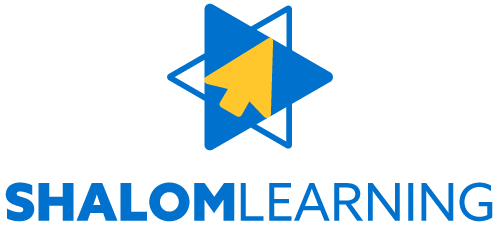ShalomLearning was founded with the understanding that most Jewish educators don’t have time to create and update innovative and engaging teaching materials. Full-time Jewish educators typically dedicate 1.5 hours of prep time for every hour of classroom instruction. But most Jewish educators are part-time and often volunteers so they simply don’t have that amount of planning time.
ShalomLearning makes it easy for educators to adopt and personalize a comprehensive curriculum, complete with hands-on, meaningful classroom activities. We even host monthly webinars so you know the best ways to use the content to engage with students and their families, including follow-up activities to reinforce learning at home.
Our approach ensures that students, parents, and teachers feel connected to their Jewish heritage and community. Here’s what makes ShalomLearning unique and successful.
1. Detailed Jewish Lesson Plans
We create detailed lesson plans with clear learning objectives and activities that are relatable to today’s youth. Lesson plans are regularly updated with new activities bringing immense value to new and experienced teachers. For Jewish communities that struggle to find great teachers well-versed in Jewish text, a pre-existing lesson plan is invaluable. We dramatically reduce prep time and help every educator feel more prepared to discuss topics, translate Jewish texts, and illustrate the real-world application of Jewish values.
2. Technology Best Practices from Secular Education
ShalomLearning incorporates the best technology from secular education into the program.
Our Learning Management System (LMS), Schoology, provides an online platform where teachers, students, and families can easily access the curriculum and digital and physical activities. Educators and parents can review students’ work and provide feedback between classes. Teachers can collaborate and share ideas directly with other educators and ShalomLearning in the LMS. This provides insights to update the curriculum and keep it relevant for today’s young learners.
3. Parent Involvement Outside the Classroom
In a recent study about ShalomLearning, students, teachers, and parents highlighted how the curriculum naturally enables ongoing learning beyond the classroom (in-person or online). Students appreciate that they can apply what they learned about Jewish values to discussions with their friends and family. The hands-on activities encourage students to connect more deeply with the values and lessons from class. This fosters community, relationship-building, and better decision-making as they learn to treat peers respectfully, look for ways to improve the world and stand up for themselves.
4. Higher Teacher Retention Rates
ShalomLearning believes strongly in ongoing educator training and support. This is especially helpful for educators with less formal pedagogical or Judaic studies training. Since ShalomLearning removes the burden of creating lessons, teachers can focus more on connecting with their students and enjoy teaching more. Educators also have access to ongoing professional development opportunities both related to the curriculum and as well as important topics such as combating antisemitism and diversity. Increasing teacher satisfaction is directly correlated with higher retention rates.
5. Social & Emotional Learning (SEL)
The ShalomLearning curriculum explores seven Jewish values and their relevance in our everyday lives using an age-appropriate lens. Our Jewish lessons incorporate strategies promoting Social and Emotional Learning (SEL) as they explore applying Jewish values to the real world. Our activities are designed to teach students how Judaism can help them build positive relationships and make responsible decisions.
6. Flexible Hebrew Curriculums
ShalomLearning offers multiple approaches to teaching Hebrew reading and prayers, including Torah Aura, JLearnHub, and Let’s Learn Hebrew Side by Side. Synagogues and communities can choose to use one or all three methods depending on the needs of different learners. All lessons include options for in-person or virtual teaching as well as online activities for self-paced learning and reinforcement. Students can record readings/chantings of Hebrew words and prayers in the LMS for teachers to review. Different lessons provide options to dive deep into the meaning of the liturgy or take virtual tours of places in Israel.
7. Online Classrooms Can Increase Attendance
The ShalomLearning curriculum was designed to have the flexibility to work in a traditional, online, or hybrid classroom. By enabling remote learning, families no longer have geographic and schedule constraints that can make Jewish education difficult. While ShalomLearning was innovating online learning long before the pandemic, it has become a mainstream part of students’ learning. ShalomLearning is a solution that is best of all worlds, and synagogues use these strengths in different ways. Some communities meet in a traditional classroom once a week and in an online classroom for the second weekly class. Others use the online classroom as a make-up option for those who missed an in-person class. Others provide classes entirely online to adapt to the hectic schedules of their families.
See how ShalomLearning can work for your community
ShalomLearning’s comprehensive, innovative curriculum, combined with flexible, modern technology, makes it a unique solution for synagogues and Jewish communities. If you are looking for new ways to engage students and increase attendance, check out our free curriculum samples or contact us.




